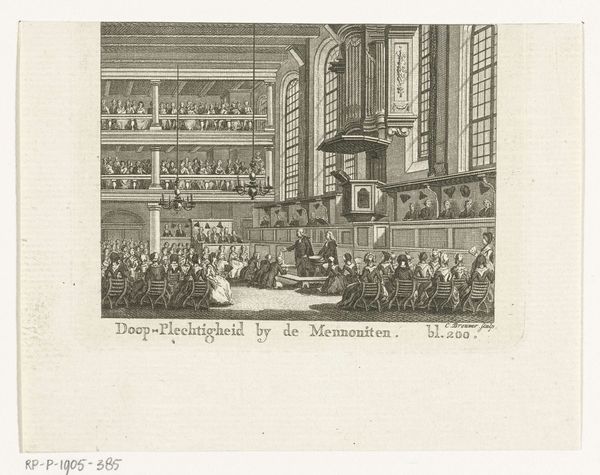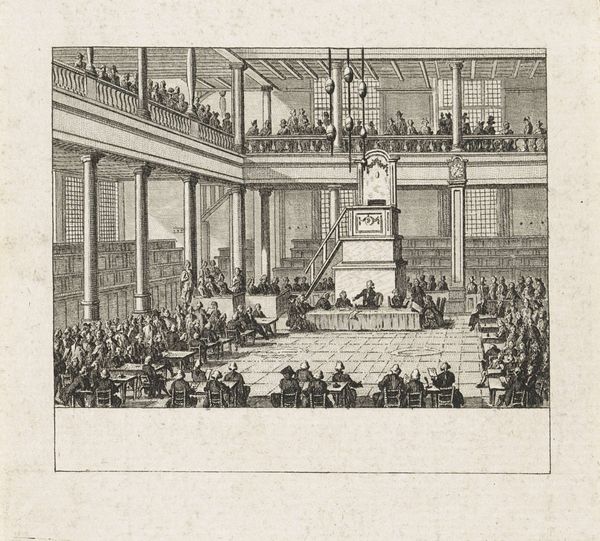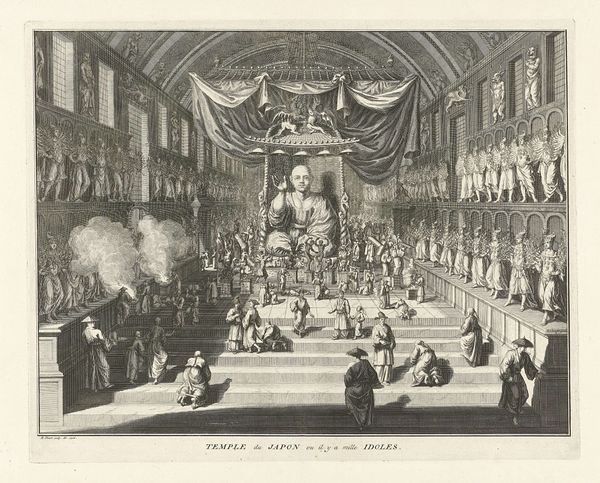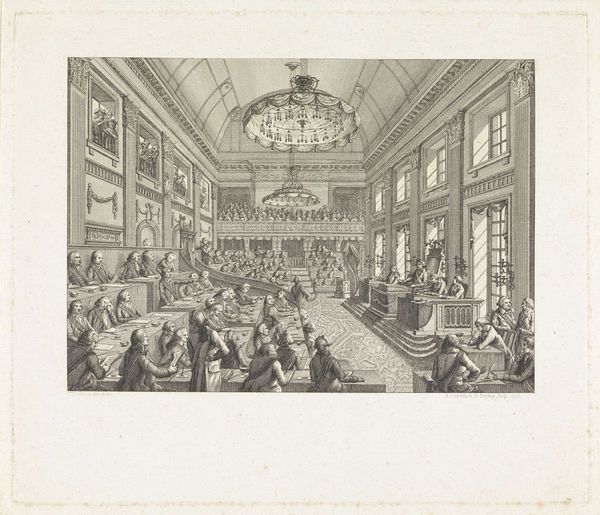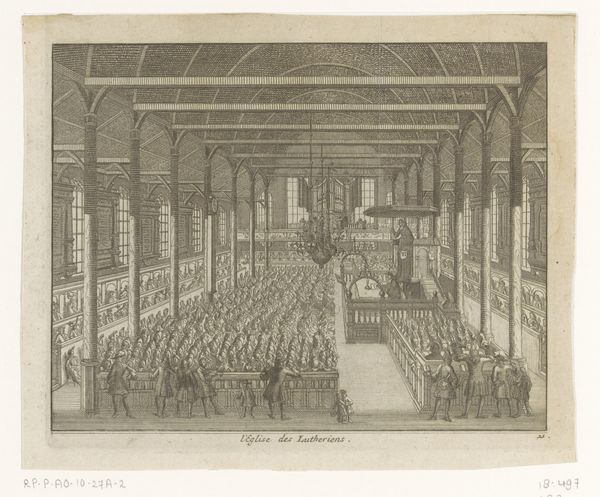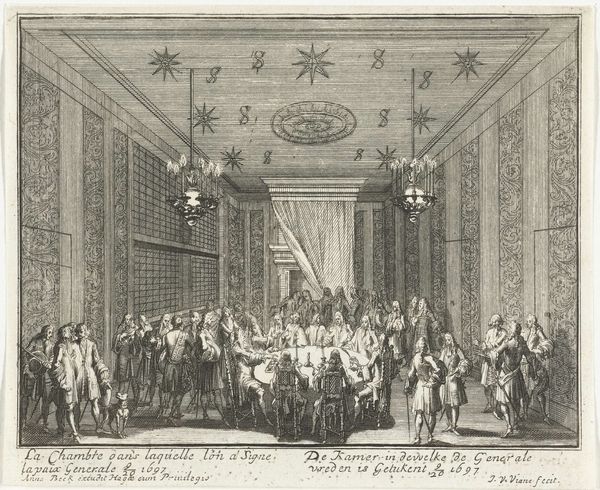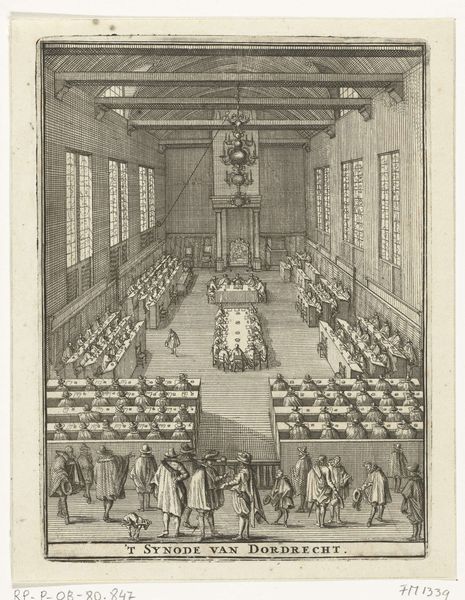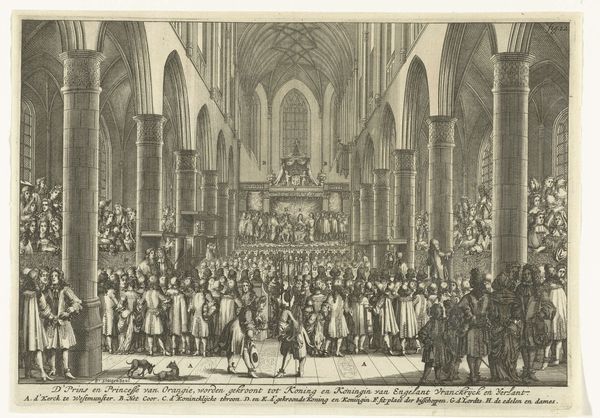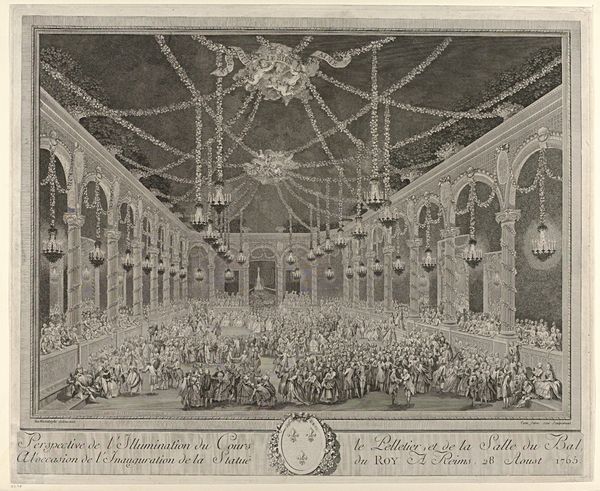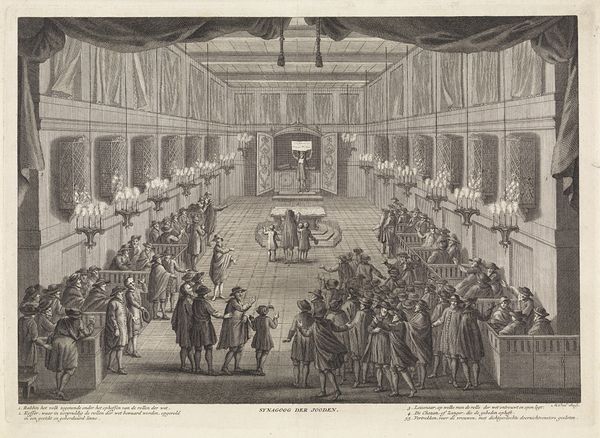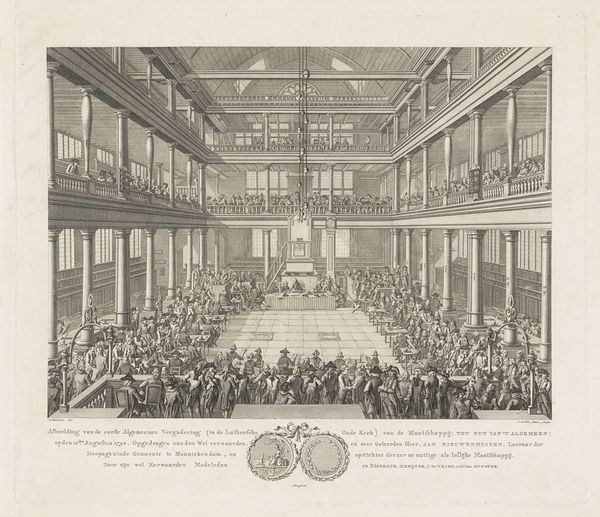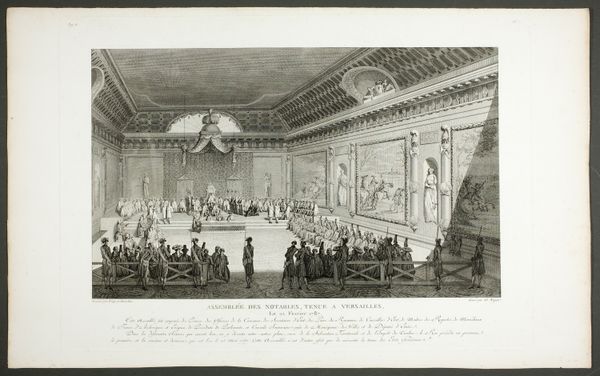
drawing, print, etching, paper, ink, engraving
#
drawing
#
baroque
# print
#
etching
#
paper
#
ink
#
genre-painting
#
history-painting
#
engraving
Dimensions: height 84 mm, width 106 mm
Copyright: Rijks Museum: Open Domain
Curator: The work before us, "The National Synod of Dordrecht, 1618-1619," is a print made sometime between 1722 and 1784, etched into paper using ink. The artist behind it is Simon Fokke. Editor: It’s quite formal, isn't it? There’s an air of intense seriousness. Everyone seems fixed in their places, within what seems to be an overly structured composition. Curator: Precisely. The Synod of Dordrecht was a hugely significant religious assembly, so Fokke aimed to capture the gravity of the occasion, the tensions, the politics of theology playing out. It was an attempt to quell growing theological division and establish doctrinal unity. Editor: Unity, or rather enforced conformity, wouldn't you say? I look at all those faces, lined up neatly, row after row, and I can't help but wonder about the voices that were silenced or marginalized in the pursuit of this so-called unity. Curator: The Synod did indeed condemn certain theological viewpoints, deemed heretical at the time, and in doing so solidified a particular Reformed theological perspective. The image here conveys this structured and regulated atmosphere through its precise depiction of the attendees and setting. It’s meant to represent the imposition of order, or at least the intent of doing so, rather than the complex political undercurrents. Editor: I find myself drawn to the people at the front though—they seem to occupy an entirely different sphere. Look at the casual stance and clothes of those men at the bottom left, one playing with his dog; there's a whole different story there of class and privilege that I find unsettling. Curator: It’s also useful to note Fokke's later artistic interpretation of events nearly a century and a half later. Prints like these served to propagate and solidify the authorized version of this historical event for subsequent generations, shaping historical memory and identity, as well as Dutch nationalism. Editor: Exactly. So much of history comes down to controlling the narrative, doesn't it? Art like this, while perhaps aiming for historical accuracy, can also act as a subtle instrument of power. It really underlines how even images can carry specific political weight, telling specific stories. Curator: And highlighting whose voices get amplified versus whose disappear into the archives. Editor: Absolutely, I agree; it provides much to consider.
Comments
No comments
Be the first to comment and join the conversation on the ultimate creative platform.
